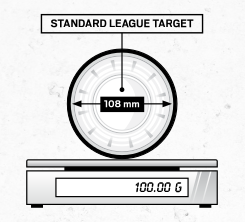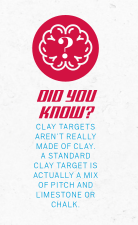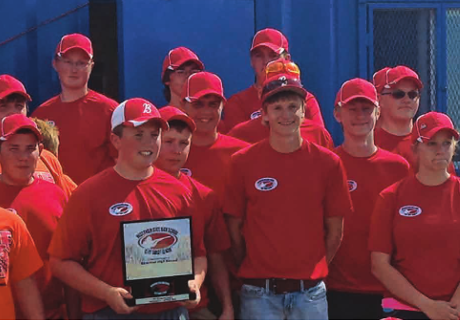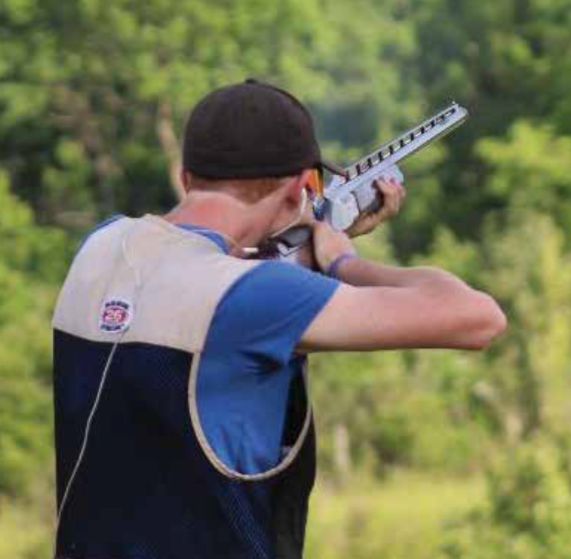
It’s a bright, sunny day. The birds are chirping, cottonwood seeds are drifting in the air, the bees are buzzing to and fro, and it’s your turn to shoot.
You close the action of your shotgun, raise it up to your shoulder and take a breath. You call for the target, and just a couple seconds later the shotgun bucks as you pull the trigger and watch with satisfaction as you crush that clay target into tiny pieces.

This year, student athletes in the USA High School Clay Target League blasted away at nearly 10 million targets during the regular season and season-ending state tournaments/championships.
Obviously, clay targets are important in a sport that revolves around shooting them out of the air, so what are they? And how are they made?

ALL SIZES AND COLORS
With so many different types of clay target shooting sports, there are many different sizes of targets. The smallest target— called a dove—is only 60mm wide. That’s just a bit bigger than two quarters placed end to end. The clay targets used for the league are 108mm across, and they weigh 100 grams.
Clay targets also come in a wide variety of colors. While most league athletes are familiar with the bright orange-domed targets, clay targets also come in colors like white, black, green, and even hot pink.
WHEN CLAY ISN’T CLAY
Did you know that clay targets aren’t really made of clay? A standard clay target is actually a mix of pitch—a thick black petroleum resin—and limestone or chalk.
Pitch by itself is really a thick, slow-moving liquid. In fact it’s so thick and slow moving that if you took a spoonful of it and held it upside down to drip, you’d have to stand there for about a decade (give or take a year) to form just one drop!
In order to make the targets easy to break, the pitch is heated and mixed with limestone or chalk. That mix is then put into a mold and cooled before painting and packaging.
More recently, biodegradable clay targets that are safer for the environment have come to the market. Those targets aren’t made with pitch. Instead, they’re made with limestone, sulfur, and other ingredients; even a type of sugar.
THE BEST THINGS IN LIFE…

Some might say that the best part of clay target shooting is the friendships you make on the line, or the honor you feel as you represent your school each league night. But for some of us, the truth is that the best thing about clay target shooting is blasting those bright orange targets right out of the sky.



